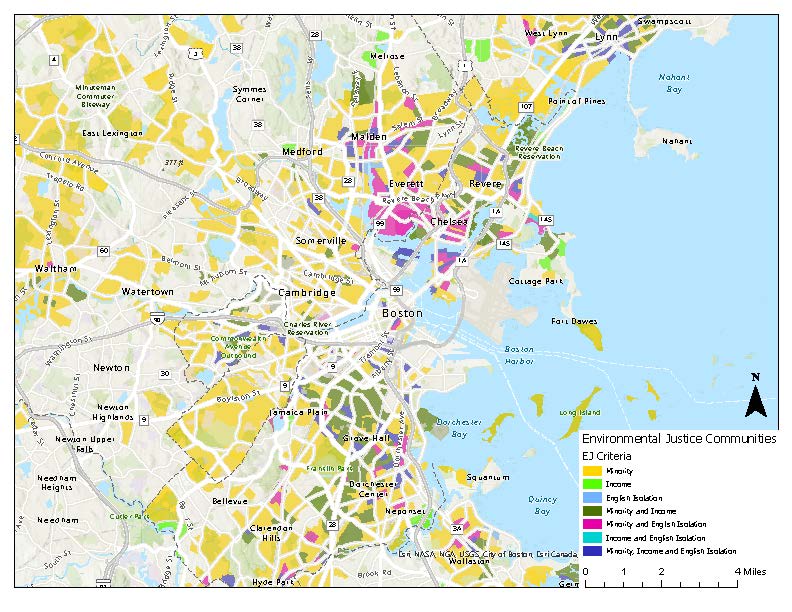This past summer instead of completing an internship, I opted to take classes instead. The summer term is divided into two mini semesters, so the class format and timeline is much different than that of the fall and spring semesters. With each summer semester being a meager 6 weeks long, the summer classes were a real sprint! During the first semester, I took two classes, which proved to be quite ambitious. The two classes I took were Introduction to GIS, with Sumeeta Srinivasan, and Urban Design, with Christine Cousineau. In the final summer semester I took Environmental Justice with Amy Laura Cahn.
I was unsure about taking GIS during the summer semester since the material covered is the same that is taught during the normal semesters, but in the end, I decided to take it because I knew I’d have more time in the summer to really focus on it. I was happy with my decision but definitely wouldn’t recommend taking GIS in the summer if you have another big commitment (internship, part time job, etc.) or are hoping for a more relaxed summer. Summer GIS was broken up into 8 assignments that came with tutorials and recorded lectures. The professor allowed students to turn in the assignments as many times as we wanted to, giving us the opportunity to continue improving upon our work and to get a higher grade. I loved this component of the class and took full advantage of it, turning in assignments various times (most likely to Sumeeta’s chagrin!). I learned so much, and Sumeeta is such an incredible professor who has an impressive amount of patience for a program that requires just that!

Urban Design with Christine was also amazing and was the perfect class to pair with GIS as the assignments consisted of three papers, biweekly discussion posts, and a final group GIS Storymap. This class felt like the perfect amount of work for the time that was allotted. Christine led lectures and the class piped in with questions and participated during guided discussions that would often occupy the second half of class. The class covered everything from 19th century pre-automobile city planning and green infrastructure to housing the homeless and much, much more. We studied the lessons weaved into the history of cities, examined cities of the present, and thought critically about the emerging ideas surrounding future cities.
During the second mini summer semester, I took a brand new class with Professor Amy Laura Cahn called Environmental Justice. Amy Laura is a practicing lawyer, so there was a legal tone weaved throughout the different sections of the class. The solutions we brainstormed as a class felt very realistic and practical because of the legal expertise that Amy Laura brought to the discussion. Each class session had a different topic. The topics we covered included: basics of social movements, basics of the climate crisis, indigenous sovereignty, environmental justice, climate justice, labor and worker rights, climate migration vs. displacement, energy justice, gender and reproductive justice, land and food, disability justice, and the Green New Deal. The classwork consisted of a weekly discussion post, readings, and a paper that we wrote throughout the course of the class with checkpoint due dates.
In summary, I would highly recommend all three of these courses but caution taking more than one summer course per mini semester if you have other commitments as they are fast paced with constant looming due dates. GIS in particular was quite a hustle and would require committing to not missing any classes and to spending upwards of 5 hours per assignment.
